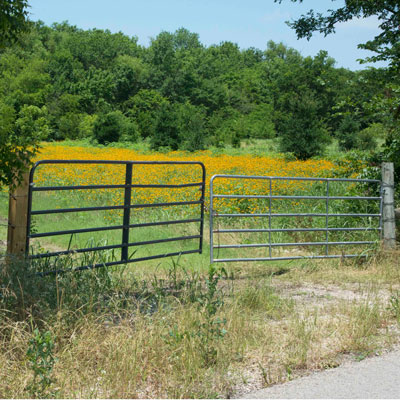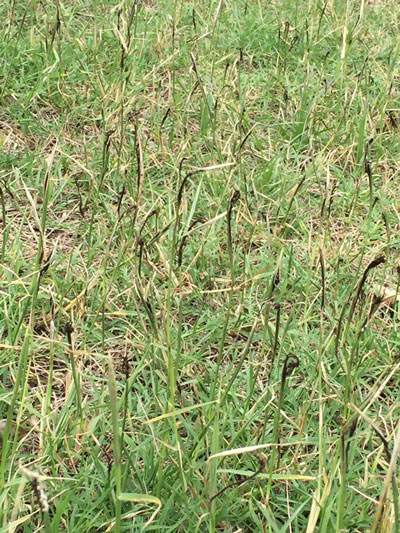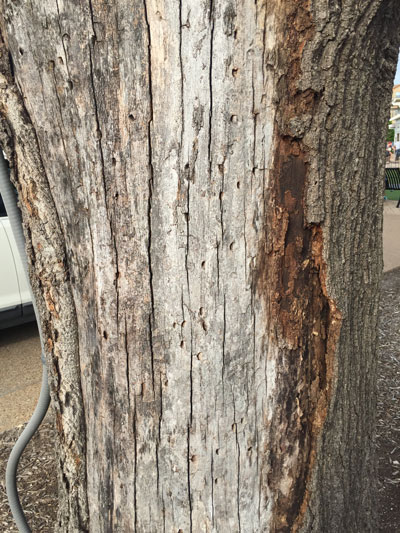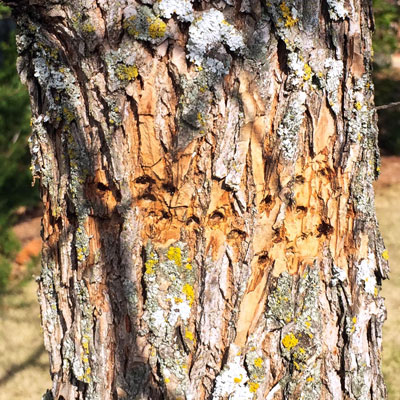Behind the Gate: June 2, 2016

You expect me to write about gates? Blackeyed Susans? Not even close! This is just a catch-all for little factoids and funtoids.
I decided that I’d like to have a place where I could post funky, fun, helpful and useless little things. This is it – right here, Behind the Gate. Let’s see how well it does.
Smitten With Smut
This is bermudagrass that’s been hit with fungal smut and its greasy black spores. This will never make “Question of the Week” status, but if you’ve just walked through it with you new white Nikes, you’re wondering what on earth has soiled your shoes.

Bermuda smut: It’s not as serious as it looks – unless you’re decked out in white!
Not to worry, you with the dirty feet. Your shoes weren’t going to stay clean forever, and the fungus doesn’t hurt your bermuda. It’s going to go away soon on its own, but you can speed it along by fertilizing your bermuda for the second time of the season. Nitrogen promotes new leaf growth, and that translates into fewer flowers and seedheads.
❖ ❖ ❖
Telling Borers from Birds
People see holes in the trunks of their trees and they immediately assume the tree is dying with borers. In a large majority of cases, that’s not what’s happening at all.

Shumard red oak suffered sunscald when its trunk was much smaller. It has tried to heal, but borers have moved into the decaying wood. Note random arrangement of their holes.
Borers These are immature forms of insects. Sometimes they’re larvae of moths, and often they’re larvae of beetles. Eggs are laid on the surface of the tree’s trunk. They hatch and begin burrowing into the wood of the tree. As they tunnel through the wood gaining their nutrition, they cut off supplies of water and nutrients to the tops of the trees. In serious outbreaks, they can even kill large trees.
Each species of borer is tethered to one species (or a very small number of species) of tree. So borers that attack peaches won’t bother cottonwoods. They’re two completely different pests. I’m not going to try to deal with borer prevention or elimination here. They are too many variables. Do a web search for “entomology borers __” and enter the type of tree, preferably the genus and species rather than the common name. That will take you into valid university websites where you’ll bypass all the quackery and home remedies that aren’t going to help.

Woodpeckers and sapsuckers create holes in regular rows around trees’ trunks and branches. These birds do little, if any, damage, and there is no call to action.
Woodpeckers and Sapsuckers
These are species of native birds here in Texas, and their “work” is easily identified by its regular pattern. Where borers are in random placement, sapsuckers will produce rows of holes that make the trunk look like it was caught in machine gun fire.
Woodpeckers and sapsuckers don’t indicate the presence of any particular insect pest, nor do they cause and damage as they’re hammering into the trunks and limbs. They come back later to feed on sap that has been produced in their wounds. There is almost never measureable damage, and therefore, there is generally no call to action. In a rare case if it appears they are riddling a tree’s trunk to excess, you would want to seal the open wounds with black pruning sealant and perhaps smear a sticky product called Tree Tanglefoot where they are hanging onto the tree. It won’t hurt them, but they won’t like it.
❖ ❖ ❖

Contest for a copy of my latest book:
I’ll have a signed copy of my book to the person with the first correct answer to the question below. The only way to answer is via e-mail, and the winner will be the person with the earliest e-mail time stamp. Send your reply to contests@sperrygardens.com.
Here is your question:
What is the tallest tree in the state of Texas? (We have a credible resource on which we base the answer, but I’d rather not give it just yet.)
The winner will be determined solely by the order in which emails come in. First correct emailed answer wins. If that’s you, we will notify you by email to request your mailing information.
We will announce the contest winner and answer on my Facebook page.
